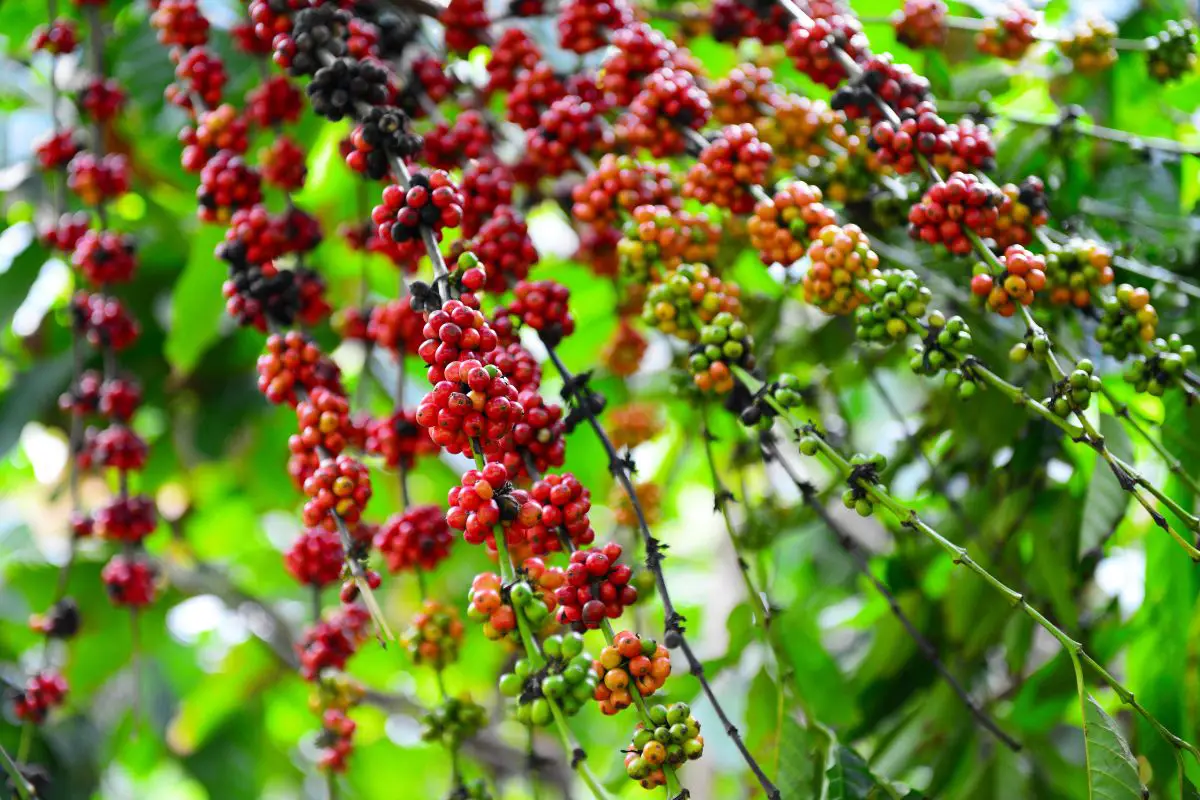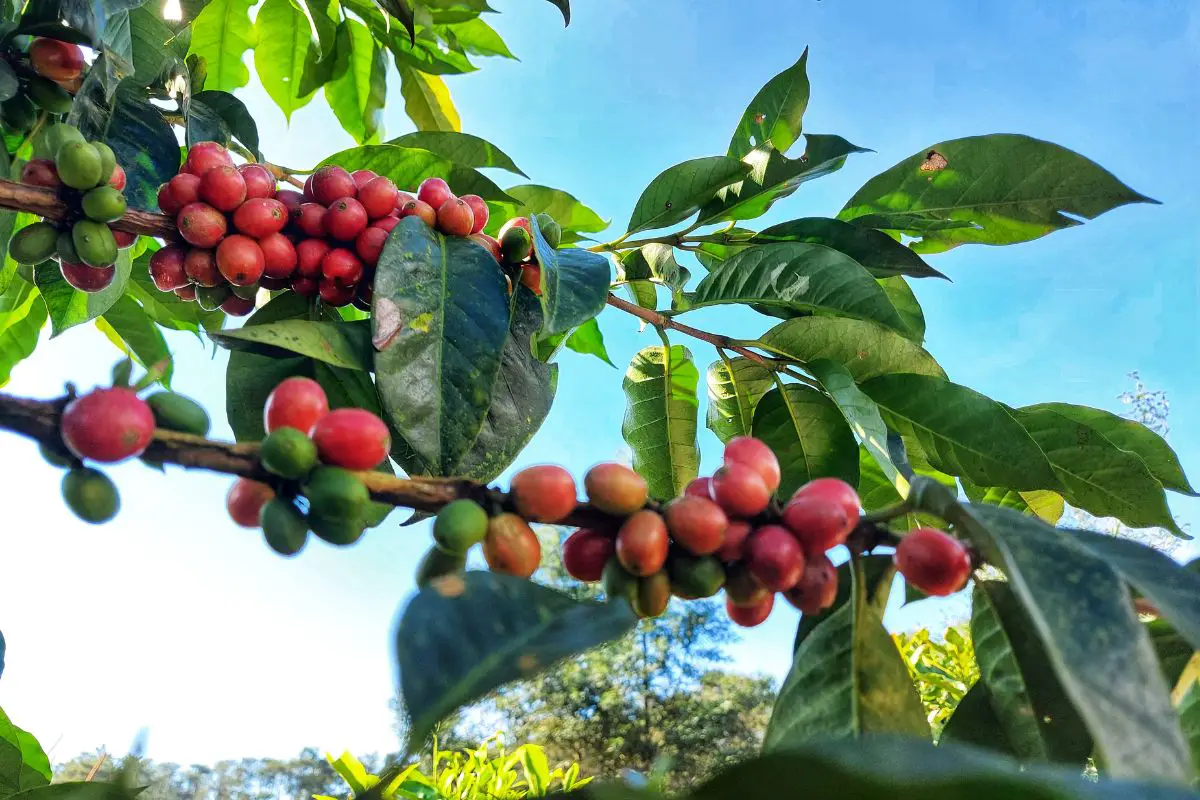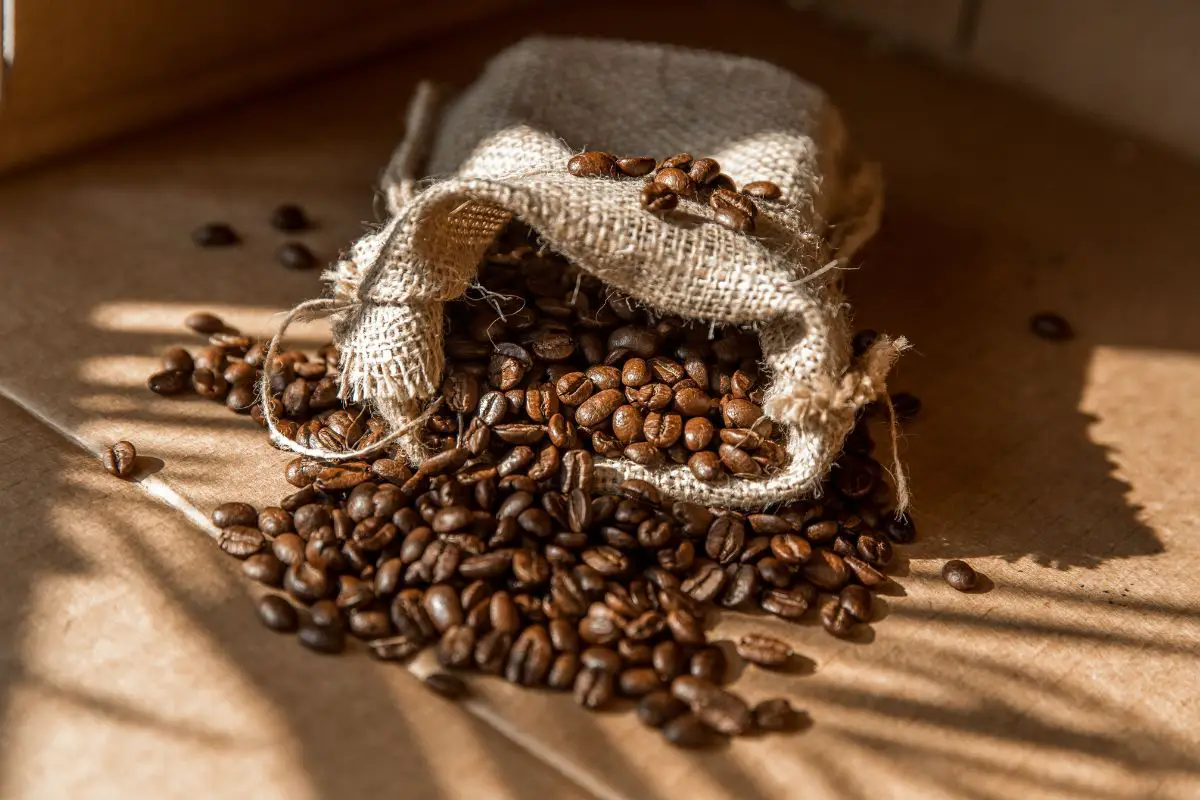Coffee is a favorite beverage that most of us take in the morning. Some coffeeholic cannot live without drinking 2 or 3 cups of coffee a day.
When you brew or receive a cup of coffee from the barista at your favorite coffee shop, you probably never think of where the coffee beans used to brew it come from.

However, since coffee drinkers have now become more aware of the processes used to brew coffee, questions concerning the origin of coffee continue to arise.
Some popular questions are ” Are coffee beans nuts?” and “Do coffee plants grow coffee beans?” That’s a sign that people are interested in the botanical origin of coffee beans.
In this article, we will answer the second question. Let’s find out where coffee beans come from and how they get to our cups.
Where Do Coffee Beans Come From?
Coffee beans come from coffee plants. These are bushy, ever-green plants that grow up to 10 meters tall.
Coffee plants produce round, green berries known as cherries that mature to red, yellow, or orange colors. These cherries, also known as Cascara, contain two coffee beans that find their way to coffee shops or homes after the coffee cherries are harvested, processed, and roasted.
Most coffee plants in the world are cultivated in the Coffee Bean Belt, a region between the Tropics of Cancer and Capricorn. Some of the countries that grow coffee in these areas are Indonesia, Brazil, Ethiopia, Colombia, and Vietnam.
Coffee cherries are harvested in stages to ensure all ripe cherries are collected from the coffee plant. Farmers prune coffee plants to about 5 -7 feet yearly to maintain a height that eases the coffee cherry harvesting process.
Once the coffee cherries are harvested, they are depupled through dry or wet processing. Some examples of these processes are wet hulling and honey processing.
During depulping, coffee cherries are dried in the sun or fermented to eliminate the mucilaginous layer surrounding the coffee beans.
These beans are then washed, dried, and the defective ones sorted out to grade them according to their quality. The grading process is based on the size of coffee beans, their weight, and their quality.
The quality of coffee beans is tested by experts referred to as cuppers. They taste the coffee made from different beans to identify the flavors that set them apart. They also visually access coffee beans to classify them in the correct category based on their quality.
Cuppers help in identifying the individual characteristics of a coffee bean. These factors help them to pick the beans to include in a blend or how to roast a type of bean to bring out its flavor notes and aromas.
Once coffee beans have been tested, they are imported to individual countries for roasting. Roasting is done after importing to preserve coffee beans. That’s because roasted coffee beans go rancid fast.
The process of coffee roasting involves putting green coffee beans through a roasting machine that toasts them while bringing out their individual flavors.
Roasted coffee beans are classified from light brown to dark brown, depending on the type of roast. That’s the light, medium, or dark roasts you buy from coffee roasters or coffee shops.
How Long Does it Take to Grow Coffee Plants?
It takes about a year for a coffee plant to start blooming by producing white and fragrant flowers.
And while you would think the appearance of coffee flowers signifies that the coffee plant will soon start to bear fruit, that’s not the case.
Coffee plants begin bearing cherries four years after they start blooming. That means you have to wait at least five years before you can get your first fruit from coffee plants.
But coffee producers aim to pick cherries when they are of the best quality. Therefore, many wait five more years after the coffee plant starts producing cherries to harvest coffee for commercial purposes.
The climate, soil type, elevation, and seed variety used to grow coffee plants determine how fast coffee plants mature. But they generally live for up to 40 years or longer.
Therefore, coffee farmers have a long time to enjoy the fruits of coffee plants.
What Do Coffee Plants Look Like?

Coffee plants are characterized by waxy, dark green leaves that are always in pairs on the coffee plant. These dark green leaves are responsible for photosynthesizing sunlight into energy necessary for the growth of coffee cherries.
There are more than 120 coffee plant varieties in the world, but what we consume most are Arabica and Robusta coffee beans.
Arabica coffee beans, one of the oldest coffee species in the world, are oval in shape. These beans are more expensive than Robusta coffee beans because they are considered to be the best-tasting coffee worldwide. They are grown at an altitude of 500 -2500m.
Many baristas prefer to use Arabica coffee beans when making coffee because they produce crisp, clean coffee with sweet, fruity, and floral flavors.
Arabica coffee is also high in acidity and low in caffeine. These beans are used to produce artisan roasted and specialty coffee beans. Some examples of popular Arabica varieties are Bourbon coffee.
Robusta coffee beans, also known as Coffea Canephora or Coffea Robusta, are smaller than Arabica coffee beans. They grow at altitudes of up to 1000m in places such as Indonesia and Vietnam.
These coffee plants are resistant to pests, disease, and harsh weather conditions. They also mature faster than Arabica coffee beans and produce more fruit per tree.
Robusta coffee beans are characterized by a bitter, woody, and earthy flavor and are less acidic than Arabica coffee beans.
Since Robusta coffee plants produce more cherries per tree than Arabica plants, they are available in large quantities. Therefore, you will find them in many coffee shops, especially those that brew Espresso coffee. They are also used when making instant coffee due to their affordability.
What Do Coffee Beans Look Like?

You may think of coffee cherries as coffee beans, but they are not. Coffee beans are two seeds that are enclosed in coffee cherries. They are covered by several protective layers in the cherry that are removed through processes such as wet hulling to reveal the coffee beans within.
Once coffee beans are extracted from coffee cherries, they are roasted and packaged for delivery to coffee shops or grocery stores.
The coffee cherry may look small, but it has many layers. These are the Exocarp, which is the outer part of the cherry that turns color from green to red, yellow, or orange as the fruit ripens.
The mesocarp is the other thin layer of flesh that is located underneath the Exocarp. It is followed by the Endocarp and then the Spermoderm, a delicate skin covering the coffee bean that’s also referred to as the Endosperm.
All these layers around the coffee bean are removed before the roasting process. The processes used to remove them depends on the availability of resources such as water and the type of flavor or aroma coffee producers want to achieve.
For example, wet hulling occurs in places with a wet climate, while dry processing occurs in arid areas that produce coffee, such as Ethiopia.
Conclusion
Now you know where coffee plants come from and the different varieties of coffee beans that you can sample.
We’ve also outlined a few coffee processing methods and the regions in the world where coffee is grown. The next time you get a cup of coffee, you’ll be more informed concerning where the beans that make it come from.
Why don’t you try the different varieties of coffee we’ve talked about and find out what sets them apart.
Related Articles